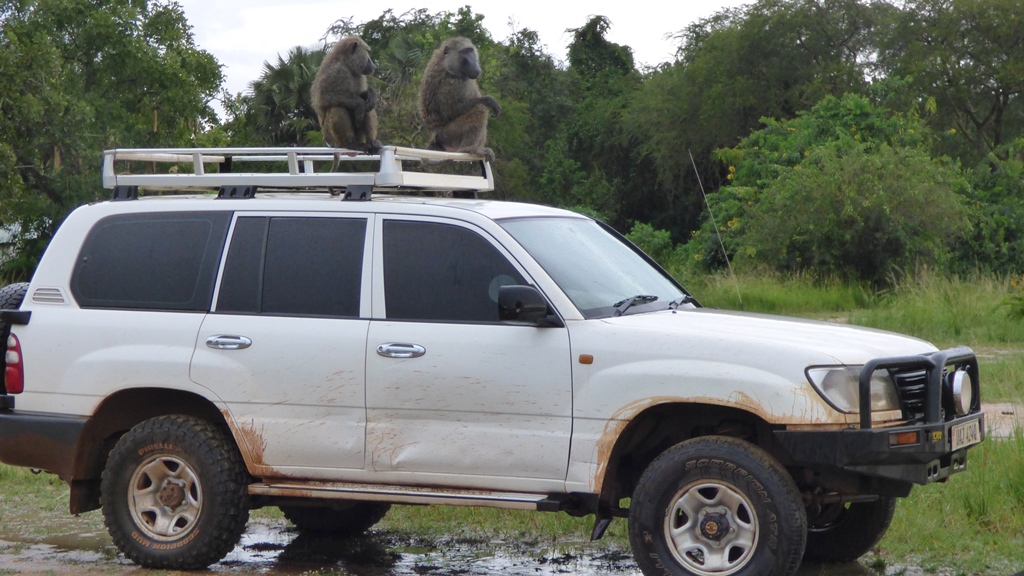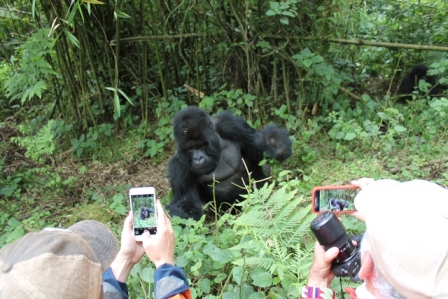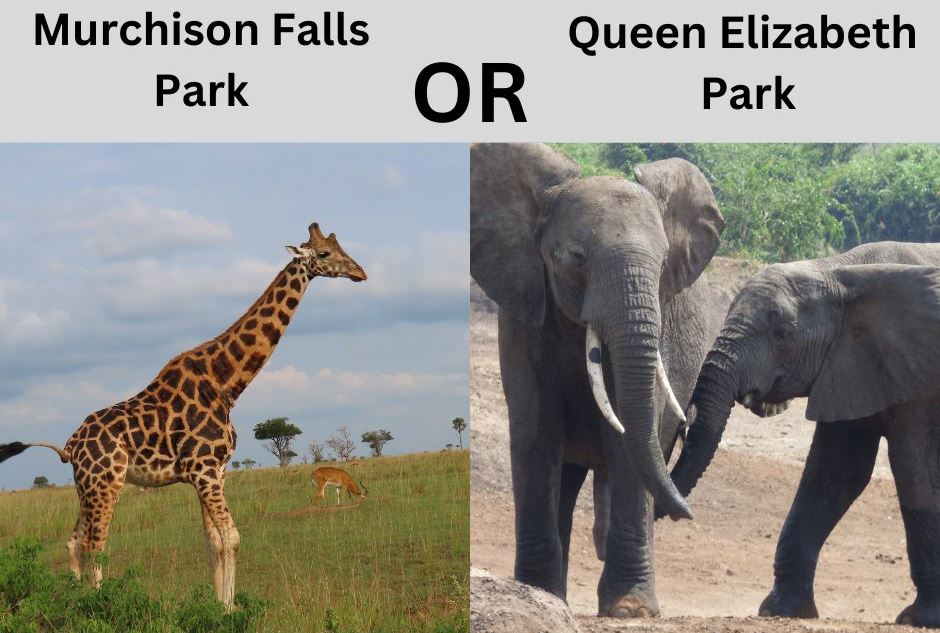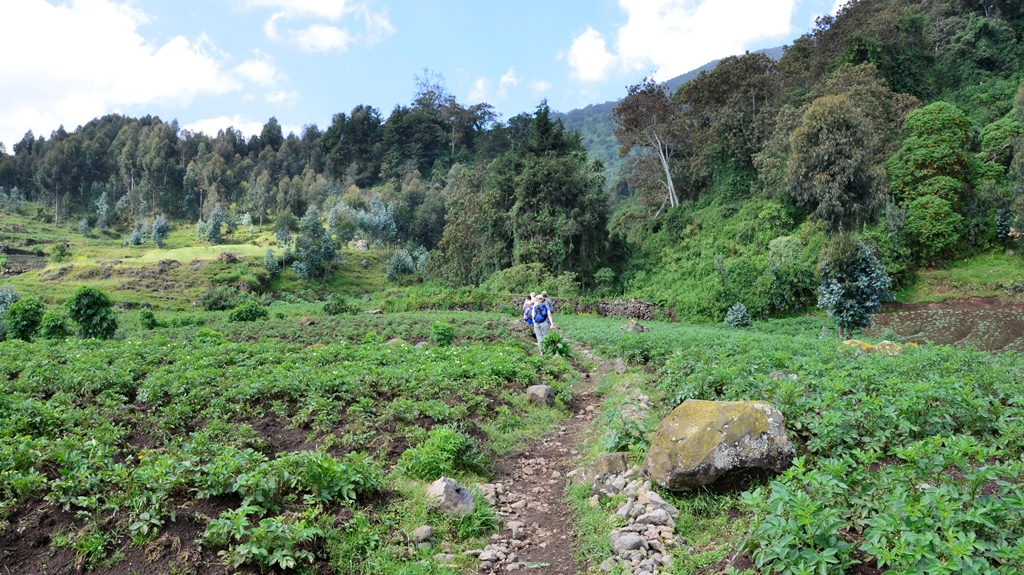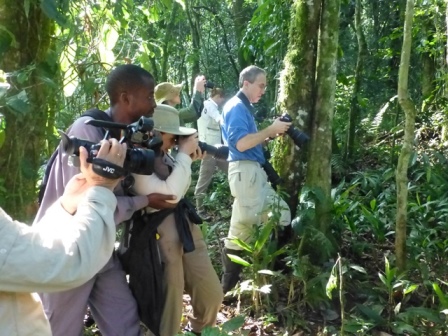
The
gorilla trekking experience is an activity that allows tourists trek into jungles where the gorillas live and watch the gorillas in their natural environment. This is done in Uganda, Rwanda and Congo that are home to the mountain gorillas in the Virunga mountain ranges spread across the three countries and
Bwindi forest in Uganda, and the lowland gorillas in Congo. The gorillas are found in many other places across Africa but these three countries have developed the gorilla tourism industry and offer the best chances to see the gorillas in the forests.
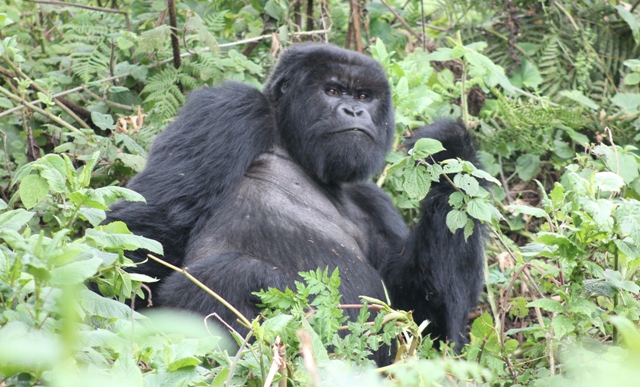
It is an incredible experience coming face-to-face with the
silverback gorilla and the entire gorilla family in the jungle. The gorillas have been habituated, and thus it is safe to be near them without any barrier.
Gorilla habituation is the process of making the gorillas to get used to presence of humans so they can tolerate their presence instead of fleeing or charging at them. However the gorillas are by no means tame, they are very much still wild and there are guidelines for tourists to follow when with the gorillas to avoid situations that can agitate the gorillas.
Is gorilla tracking good or bad for gorillas? Is it an ethical activity?
Gorilla trekking is an exciting activity for the tourists that acquire lifetime memories, but for the gorillas is this a good thing for them? Is it good for the gorillas to be coming into contact with the humans? Is it good for the humans to be invading the delicate environment of the gorillas? These are questions often asked by many people who are conscious about wellbeing of wildlife and protecting the environment.
Well, the answer is not easy…
I can start off by saying there are advantages and disadvantages of gorilla trekking for the gorillas
The disadvantage is that the presence of humans around the gorillas puts the gorillas at risk. The biggest risk being transfer of diseases from humans to gorillas. Gorillas and humans share more than 98% of DNA and can therefore transmit diseases between each other. For example, in the past the ebola outbreaks in central and west Africa have nearly wiped out the gorilla populations in some places.
So what benefit do gorillas get from the visiting tourists or from gorilla trekking??
To be honest, it would be better if the gorillas are left alone in the jungle with no visits from tourists or anyone.
But there are benefits to gorillas, so much that the mountain gorillas in Uganda and Rwanda would not have survived till now if it were not for gorilla tourism. The gorilla tourism has brought in a lot of revenue for conservation efforts. The gorillas’ biggest threat to survival was the loss of habitat due to a growing population that was rapidly encroaching on the jungles. This also exposed the gorillas to a lot of poaching. The number of mountain gorillas dwindled so much that about a decade ago less than 800 individuals were left.
Gorilla tourism brought in much needed revenue for conservation. Tourism also brought alternative sources of the income that benefited the communities around the gorilla mountains who depended on the forests through logging, hunting, etc… Would be poachers from the communities have been employed by the growing tourism businesses around the parks such as lodges and tour companies
As a result there has been a turnaround from the dwindling mountain gorilla population to a steadily growing population of mountain gorillas that are currently numbered more than 1000 individuals..
Communities that previously looked at the conservation of gorillas and habitats as threat to their own livelihoods are now champions of protecting the gorillas and their habitats.
Rules to protect the gorillas from effects of gorilla tracking
To minimize the effects of gorilla tracking on the gorillas, such as the risk of transfer of diseases from humans to gorillas the following rules are followed
Keep at least 7 meters from the gorillas
When with the gorillas tourists are advised to keep at least 7 meters from the gorillas. If the gorilla moves closer a person has to keep moving back to maintain this distance. This is way chances of transmitting diseases between gorilla and man are minimized. This distance also protects the gorillas from stress as getting too close would agitate the silverback gorilla and other members. The emotional wellbeing of a gorilla is everything for the gorilla
Sick people are not allowed to track the gorillas
Any person with symptoms of a communicable diseases such as cough, flue, etc.. are not allowed to track the gorillas.
Mandatory wearing of masks
From the covid era wearing a mask has been made mandatory to protect the gorillas from any possibility of spreading the virus to the gorillas. This is in addition to the testing and covid vaccination the tourists were required to go through before being allowed to track the gorillas.
Touching the gorillas is not allowed
Petting and touching the gorillas is totally prohibited. In fact there should not be any physical contact with the gorillas whatsoever.
Do not sneeze in the face of gorillas
If you catch a sneeze, do it when face away from the gorillas. Turn away from the direction of the gorillas and sneeze on the inside of the elbow.
Do not eat around gorillas
Eating around the gorillas is totally prohibited as gorillas can pick leftovers that could spread diseases and also a new diet introduced to the gorillas may cause complication in the gorillas.
 The gorilla trekking experience is an activity that allows tourists trek into jungles where the gorillas live and watch the gorillas in their natural environment. This is done in Uganda, Rwanda and Congo that are home to the mountain gorillas in the Virunga mountain ranges spread across the three countries and Bwindi forest in Uganda, and the lowland gorillas in Congo. The gorillas are found in many other places across Africa but these three countries have developed the gorilla tourism industry and offer the best chances to see the gorillas in the forests.
The gorilla trekking experience is an activity that allows tourists trek into jungles where the gorillas live and watch the gorillas in their natural environment. This is done in Uganda, Rwanda and Congo that are home to the mountain gorillas in the Virunga mountain ranges spread across the three countries and Bwindi forest in Uganda, and the lowland gorillas in Congo. The gorillas are found in many other places across Africa but these three countries have developed the gorilla tourism industry and offer the best chances to see the gorillas in the forests.
 It is an incredible experience coming face-to-face with the silverback gorilla and the entire gorilla family in the jungle. The gorillas have been habituated, and thus it is safe to be near them without any barrier. Gorilla habituation is the process of making the gorillas to get used to presence of humans so they can tolerate their presence instead of fleeing or charging at them. However the gorillas are by no means tame, they are very much still wild and there are guidelines for tourists to follow when with the gorillas to avoid situations that can agitate the gorillas.
It is an incredible experience coming face-to-face with the silverback gorilla and the entire gorilla family in the jungle. The gorillas have been habituated, and thus it is safe to be near them without any barrier. Gorilla habituation is the process of making the gorillas to get used to presence of humans so they can tolerate their presence instead of fleeing or charging at them. However the gorillas are by no means tame, they are very much still wild and there are guidelines for tourists to follow when with the gorillas to avoid situations that can agitate the gorillas.
